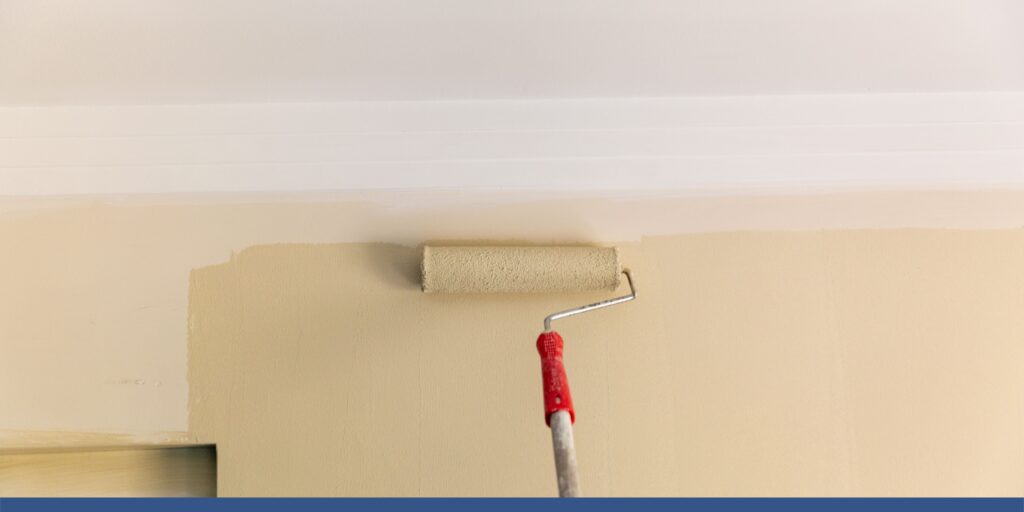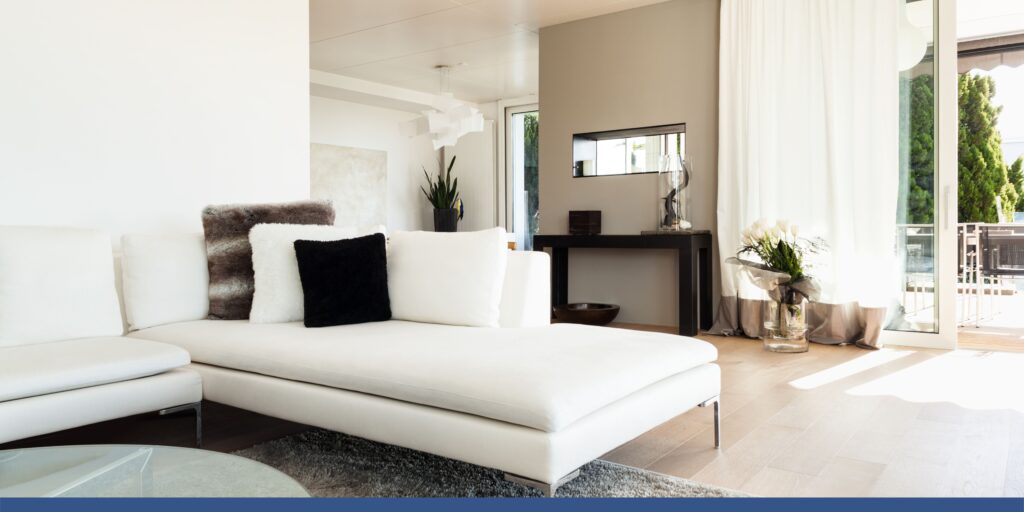It’s amazing to think that something as small as paint can have the power to completely transform the look and feel of your home. Over time, however, even the most beautiful paint job will begin to show its age. So how long does paint last? The short answer? It depends.
Of course, there are many other factors that come into play when painting the exteriors of your house, including the climate, materials used, and the type of surface you are painting. For example, exterior painting can last longer in cool and warm climates than in areas with extreme weather conditions since exposure to harsh elements can cause the paint to crack and fade.
For places with continental climates like Connecticut, you can expect your paint to last between five and seven years. However, on average, your exteriors can remain in good condition for between 5 and 10 years.

How Much Will 10 Gallons Paint Cover?
A 10-gallon bucket will cover approximately 400 square feet with a single coat and 500 square feet with two coats. Of course, this will vary depending on the wall’s condition, texture, and surface type. For example, a gallon of paint covers approximately 400 square feet, with two coats needed on porous surfaces like wood or drywall.
On the other hand, you might get away with just one coat on smoother surfaces like sheetrock. Professional painters, however, always apply two coats of paint on all surfaces, regardless of whether they’re porous or not. Why? Because it’s simply a better, longer-lasting, and more durable paint job.
This ensures even coverage and hides a multitude of flaws and imperfections. The key here is to allow plenty of time between coats to let the previous coat dry completely.
How Many Rooms Can 5 Gallons of Paint Cover?
Depending on the size of the room and the number of coats you apply, approximately 12-16 rooms. This will vary depending on the surface type and the wall’s condition. If you were to paint your entire home with just one gallon per room, you would be very limited in interior color choices.
Most homeowners use at least two to three gallons on average per room in reality, though. You can up that number even more if you’re working with a particularly large or multi-storied room.
When it comes to choosing the right amount of paint, there are plenty of factors to consider. First and foremost, you’ll want to take into account the room size. We recommend covering approximately 300-400 square feet per gallon.
You’ll also want to account for the amount of wall texture, the type of surface you’re painting, and the amount of trim and accent pieces you’ll be covering. And, of course, you’ll also need to factor in the number of coats you plan on applying.
How Many Coats of Paint Does a House Need?
Typically, two coats of paint are applied on any given surface. In certain instances, however, an extra coat may be necessary. This is often the case when painting a porous surface, like drywall. An extra coat is also necessary when painting over glossy or highly reflective surfaces, like walls with vinyl tile.
How Long Does It Take a Professional Painter to Paint a Room?
The good news is that most paints come in either a single or two-coat formula. This makes it easier to figure out the exact amount of paint you’ll need. For example, you can get away with just one coat if you’re painting a smooth, non-porous surface.
But if you’re painting a porous surface, you’ll likely need two coats. The amount of paint you need primarily depends on the size of the room you’re painting. We recommend covering approximately 300-400 square feet per gallon, but the exact amount will vary based on the room size, wall texture, and surface type.
What Is Luster Paint?
Luster paint is essentially a high-gloss paint that comes in various finishes. It’s easy to clean and can withstand a certain amount of moisture, so it’s an excellent option for bathrooms, kitchens, and other places where water is present. If you’re looking for an easy way to spruce up a room without replacing the flooring or fixtures, luster paint is a great option.

What Paint Color Do Builders Use?
There isn’t one specific color that all builders use. Instead, it largely depends on the region that the builder is from. Certain areas in the country, like Connecticut, are known for their blue-colored builder’s paint, while other areas prefer red or predominantly yellow-based. There are also several paint manufacturers throughout the country that produce paint with a color palette that is specifically designed for builders. One of the most prominent ones is Sherwin-Williams.
Is There a Difference Between Ceiling Paint and Regular Paint?
Yes. There are a couple of differences between ceiling paint and regular paint. The most obvious difference is the color. Ceiling paint comes in a neutral color like white, gray, or beige. On the other hand, regular paint comes in a variety of bold, vibrant colors. The other difference is the texture of the paint. Ceiling paint is smoother than regular paint.
Can You Paint Over Old Paint?
Yes, you can paint over old paint, especially if you don’t have the time or the budget to tear out the old, cracked paint. However, keep in mind that doing so may not result in how you want it to be. For example, old paint may have been treated with a chemical to prevent the new paint from sticking to the old paint. You may also have to use more layers of paint to cover the old paint.
To get an even finish and a great-looking paint job, it’s essential to use a good primer. This will ensure that the new paint doesn’t show through the cracks of the old paint job.

Do You Have to Prime Before Painting?
You don’t have to prime before painting if you’re painting over old paint. But if you’re painting over a glossy or highly reflective surface, you’ll want to prime the surface first. If you’re painting over a glossy surface, like vinyl tile, it’s important to use flat paint with a low sheen level. Otherwise, it may be difficult to get a smooth finish. Similarly, if you’re painting over a highly reflective surface, like freshly-painted drywall, you’ll also want to use flat paint. This will ensure that the paint doesn’t show through once it dries.

Is It Better to Use a Primer or Two Coats of Paint?
It’s always better to use two coats of paint instead of one coat of primer followed by one coat of paint. Why? Because two coats of paint will provide a better finish. The first coat of paint will adhere to the surface, and you’ll be able to see what you’re working on. Then, when it comes time to apply the second coat, you’ll be able to see any missed areas of the wall. Many people wonder if they can skip the primer and just use two coats of paint. While this may work on some surfaces, it’s not a foolproof method. Unless you’re painting over a previously painted surface, it’s best to use a primer first.
Are Paint and Primer in One Good?
Paint and primer in one is a combination of a primer with a small amount of paint. It’s a good choice for small projects that don’t require an entire primer can. It’s convenient if you need to match a wall that has recently been painted. These paints are quick-drying and easy to apply. But just like regular paint, it’s essential to follow the manufacturer’s instructions for the best results.
Don’t forget to visit Custom Colonial Painting in Connecticut for your house painting needs to get free estimates and quality work. Our experienced and qualified painters will get the job done right the first time.



